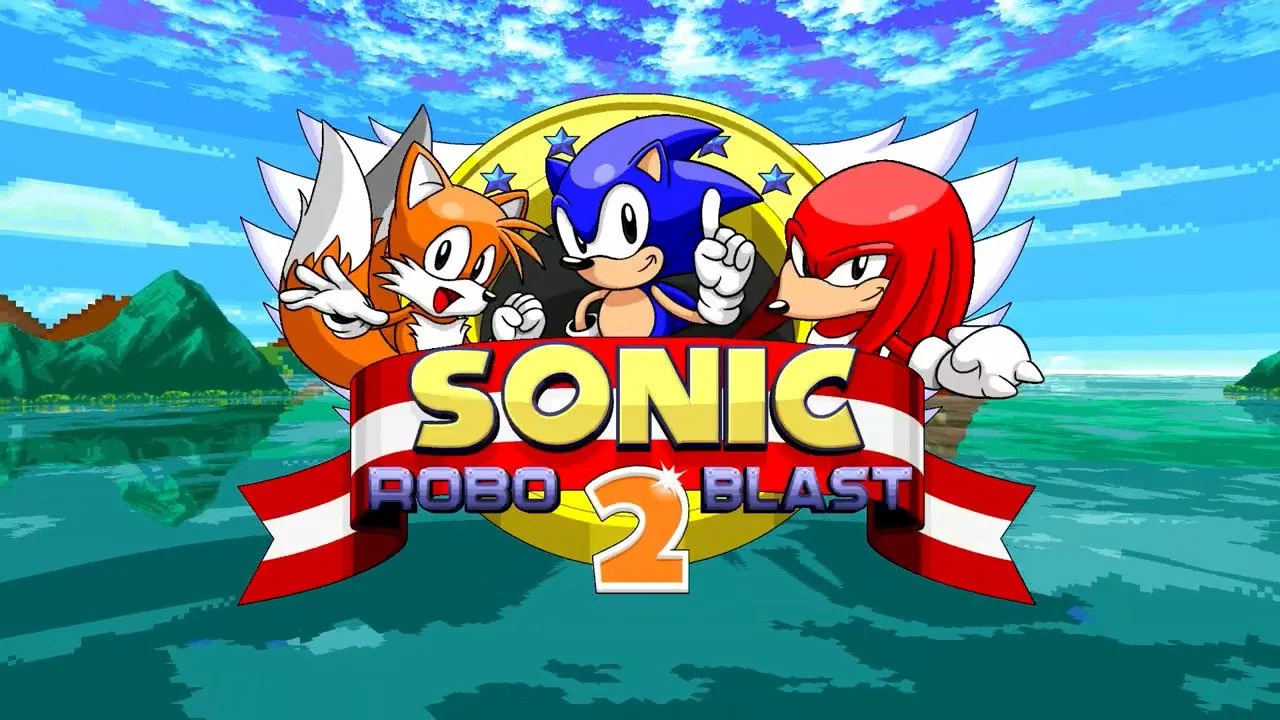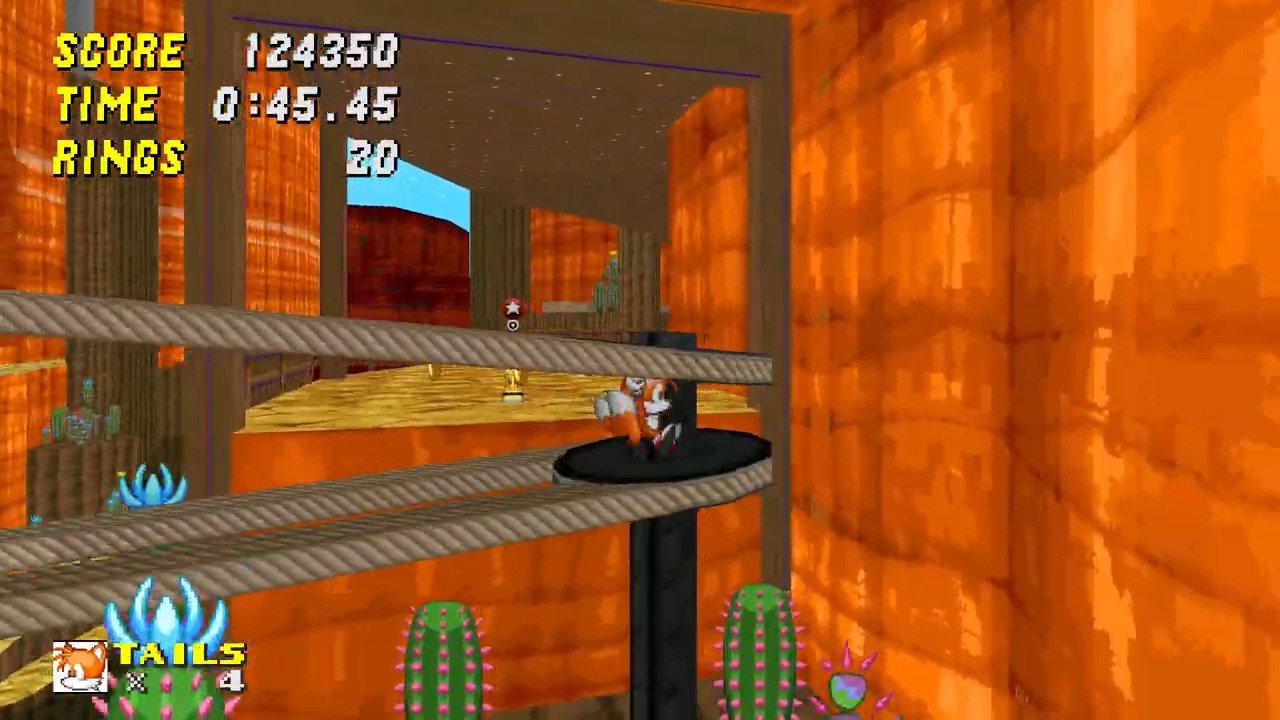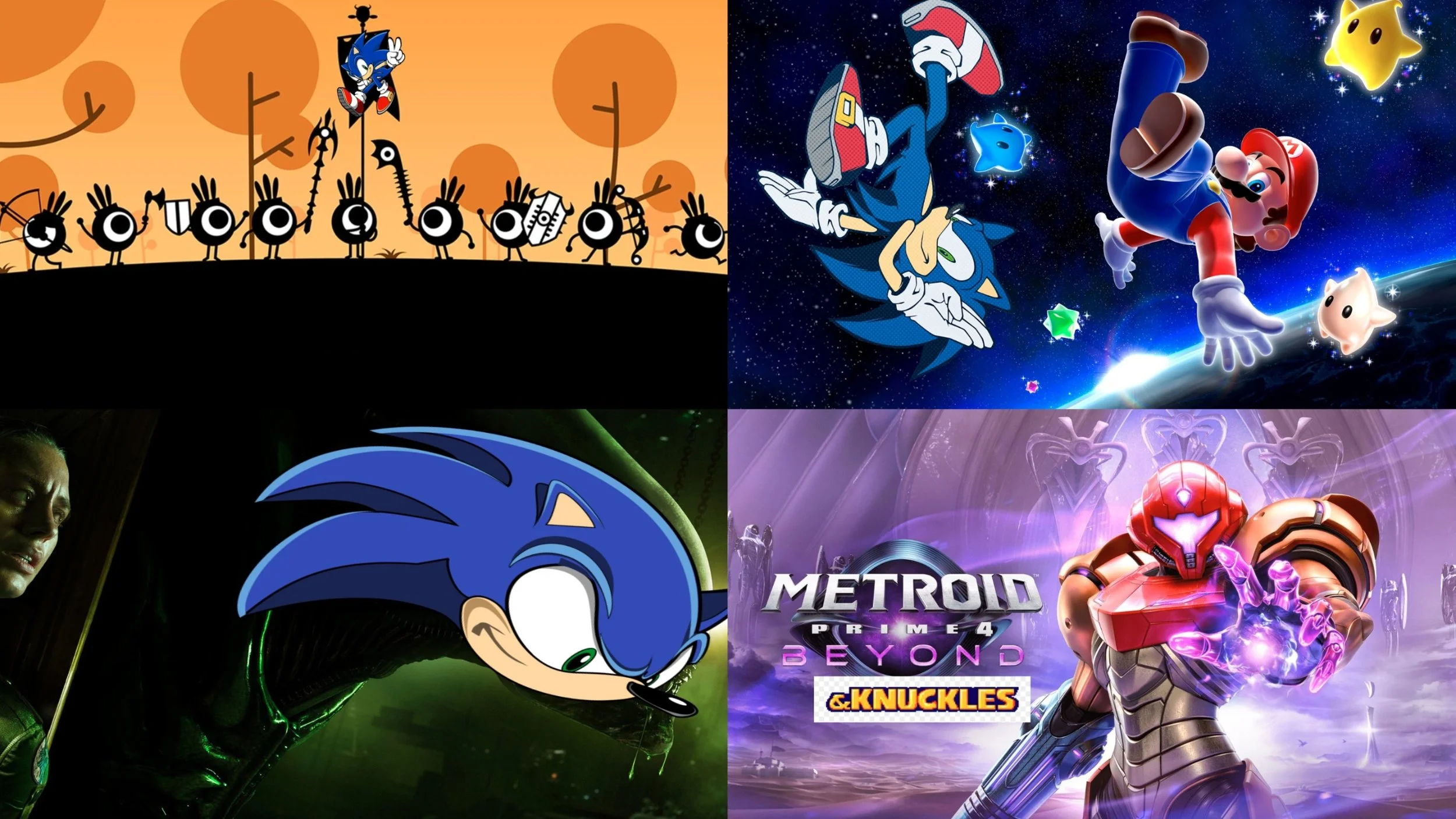sonicmenu | Why Sonic Robo Blast 2 Matters
Sonic the Hedgehog is a tough character to pin down. Sure, he’s blue, wears sneakers and likes to go fast. But everything else about him blurs. Is he a happy-go-lucky platformer mascot? The hero of an ongoing Shonen anime? A werewolf, a knight, a guitar player and a freedom fighter? Unlike Mario, who remains his YAHOOO-ing and Let’s-a-go-ing-self no matter where he appears, Sonic can’t help but change to take the shape of his container.
That isn’t necessarily a bad thing, though. Sonic’s lack of consistency means it’s that much easier for him to surprise you. You can find him just about anywhere online, even in places where speedy blue hedgehogs simply should not exist. To wit: the wild world of Doom modding.
Sonic the Hedgehog has been a part of Doom’s history since the very beginning. As early as 1996, Sonic the Hedgehog Doom let you swap out protagonist Doomguy for Sonic himself. While crude, it inspired developer AJ “SSNTails” Freda. He joined forces with modder Johnny “Sonikku” Wallbank, who had previously made a Sonic platformer via The Games Factory, to reinvent Sonic in the Doom Legacy engine.
The first demo for Sonic Robo Blast 2 was released in 1999. This was two years before Alien Vendetta, a Doom 2 wad that Doom historian NotJabba called “the turning point for Doom mapping.” That’s right: this fangame, in its embryonic form, existed when the Doom modding community was still in its infancy. What’s truly remarkable though is that it kept evolving. Twenty-six years after its initial release, Sonic Robo Blast 2 is still being updated regularly.
Today, Sonic Robo Blast 2 plays like a hybrid between a 2D and 3D Sonic title. You pick a character at the start: Sonic and Tails, either individually, or their friend Knuckles. Then you’re immediately set loose to blast through levels as you please. Like in 3D Sonic, the world expands in all directions rather than just left or right. But like 2D Sonic, that world is designed so that multiple paths are viable. It’s up to you to decide if you want to sprint to the end of the level as quickly as possible, or instead to root around for secrets and hidden collectables.
It’s shocking just how well Sonic Robo Blast 2 approximates the look, feel and sound of a Sonic game in its current form. The characters, which were recently redesigned by sprite artist MotorRoach, look exactly as you’d imagine they should. The soundtrack is worthy of comparison not just to the mainline Sonic games, but also to the Doom modding scene’s own history of original music. Even the use of 2D sprites within an approximation of 3D space, as expected from games made in Doom, perfectly fits the Sonic aesthetic.
If I have a criticism of the game it’s that Sonic just moves too fast. Do a “thwok” and he rockets towards like a Doom weapon projectile. The camera can just barely keep up; even the provided “auto-brake” setting didn’t do much for me. So I can’t help but feel a bit motion-sick while playing this labour of love. That said, the game’s survived for long enough that I figure the majority of folks don’t have this problem.
It’s impressive enough that Sonic Robo Blast 2 is still thriving after twenty-six years. What’s even wilder is that Sonic Robo Blast 2 is just the starting place for Doom’s Sonic modding scene. The site’s message board has hundreds of fan-made maps, characters and additional modes. There’s a full-fledged kart racer, Sonic Robo Blast 2 Kart, with online multiplayer and its own extensive modding scene. Not just that: the kart racer has its own spiritual sequel, Dr. Robotnik’s Ring Racers.
Ring Racers is particularly fascinating to me because it’s so baroque. The game begins with a tutorial that, in its original release, required several hours to complete. (The current release gives you the option to test out of the tutorial, and also makes just the first few stages mandatory.) Winning races requires mastering techniques like juicing your kart with rings, abusing kick power-ups to blast through energy barriers, and overcoming slopes on the course. You can even give other players an early handicap by knocking their karts into the starting barrier.
A lot of folks had no idea what to make of the mod’s mechanical complexity when it came out in 2024. Why was a kart racer of all things this technical? But that in itself is just part of the charm of games developed in the modding community. Dr. Robotnik’s Ring Racers wasn’t developed for a wide audience. It was made for a specific community of kart aficionados. That gave the development team opportunities that, frankly, an official games studio like Sonic Team (or even Nintendo) might never have otherwise.
According to some, the history of video games progresses from the original Super Mario Bros. to whatever big-budget title will win the Game Awards this year. The original Sonic the Hedgehog sits somewhere in the infant stage of that long evolution. But this is false. Video games were not developed in a straight line. They are an unending chain of underground caves sprawling in every cardinal direction. Sonic Robo Blast 2 and its progeny occupy just one of those many caves. Thanks to the efforts of folks like Dominic Tarason, they’re even well-mapped. Others are not so lucky. Their developers toil away in the darkness, where there are grues.
When folks today talk about “games as platforms,” they refer to how players might gravitate towards “everything games” like Fortnite and abandon the rest. But there’s another possible future that looks more like this underground cave system. Rather than untouchable monoliths spewing out content, games instead become raw material for hyper-fans to reinterpret however they like. That’s what Stephanie Boluk and Patrick LeMieux call “metagaming,” reinventing games in the spirit of play as opposed to blind, unthinking consumption.
Not just Sonic the Hedgehog but even Mario himself are subject to this spirit of reinvention. If the medium of games hopes to retain its soul, it must make space for these forms of art. Cultivate love and curiosity as opposed to blind obedience; that’s our road ahead, marked by burn scars left by sneakered feet breaking the sound barrier side by side.









